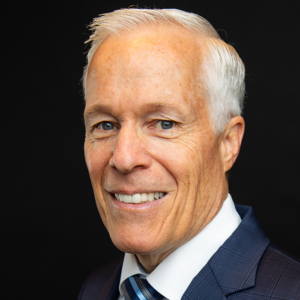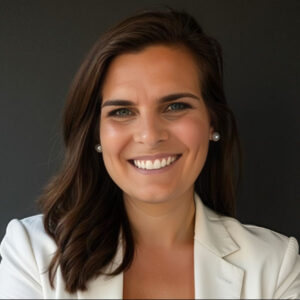Are Casualty and Theft Losses Tax Deductible?
Are Casualty and Theft Losses Tax Deductible?
If your property is destroyed, damaged, or stolen due to casualty or theft, you may be entitled to a tax deduction. A casualty is the damage, destruction, or loss of property resulting from an identifiable event that is sudden, unexpected, and unusual.
A sudden event is one that is swift, not gradual or progressive. It does not include damage from events such as termite infestation or deterioration from normal wind and weather.
An unexpected event is one that is ordinarily unanticipated and unintended.
An unusual event is one that is not a day–to–day occurrence and that is not typical of the activity in which you are engaged. Examples of casualties include car accidents, fires, earthquakes, hurricanes, tornadoes, floods, and vandalism.
A theft is the taking and removing of property or money with the intent to deprive the owner of it. Lost or mislaid property is not considered a theft; you cannot deduct the loss.
If your property is covered by insurance, file a timely insurance claim for reimbursement of the loss. Otherwise you cannot deduct this loss as a casualty or theft. This does not apply to the portion of the loss not covered by insurance. If business or income-producing property, such as rental property, is stolen or completely destroyed or lost because of a casualty, the amount of your loss is your adjusted basis in the property minus any salvage value and insurance or other reimbursements you receive or expect to receive. Adjusted basis is usually your cost, increased or decreased by various events such as improvements or depreciation.
To determine the amount of a casualty or theft loss of personal–use property, or of the personal-use portion of business or income–producing property that is used partly for personal purposes, you must know the fair market value of your property before and after the casualty. Fair market value is the price for which you could have sold the property to a willing buyer if neither of you had to sell or buy and both knew all relevant facts. The amount of your loss is the lesser of:
The decrease in fair market value as a result of the casualty; or
Your adjusted basis in the property before the casualty or theft.
You must reduce your loss by any reimbursement you receive or expect to receive, such as an insurance recovery.
To determine how much of the loss is deductible, if the property was held by you for personal use, or partly for personal use, you further reduce your loss by $100. This $100 reduction for personal use property applies to each casualty or theft event that occurred during the year, regardless of how many items of property are involved. The total of all your casualty and theft losses of personal use property for the year must then be reduced by 10% of your adjusted gross income. The balance that remains after making these reductions is the amount of your deductible casualty or theft loss of personal use property.
To claim a casualty or theft loss, you must complete Form 4684 (PDF), Casualties and Thefts, and attach it to your return. You may claim casualty or theft loss of personal use property only if you itemize deductions on Form 1040, Schedule A (PDF).
If your property is damaged by a casualty, you must decrease its adjusted basis by the amount of any insurance or other reimbursement that you receive and by the amount of any deductible loss. You must increase the adjusted basis by amounts you spend on repairs after a casualty that substantially prolong the life of the property, increase its value, or adapt it to a different use.
For more information about the basis of property, refer to Topic 703, or Publication 551, Basis of Assets.
If you believe that your loss qualifies as a casualty or theft loss, refer to Publication 547, Casualties, Disasters, and Thefts. If many items of personal use property are involved, you may wish to refer to Publication 584, Casualty, Disaster, and Theft Loss Workbook. If many items of business use property are involved, you may wish to refer to Publication 584B (PDF), Business Casualty, Disaster or Theft Loss Workbook.
If you have a casualty loss from a disaster that occurred in an area declared by the President to be a federal disaster area, refer to Topic 515.
—————————————————————————————————————————————————————————————————————
We hope you found this article about “Are Casualty and Theft Losses Tax Deductible?” helpful. If you have questions or need expert tax or family office advice that’s refreshingly objective (we never sell investments), please contact us or visit our Family office page or our website at www.GROCO.com. Unfortunately, we no longer give advice to other tax professionals gratis.
To receive our free newsletter, contact us here.
Subscribe our YouTube Channel for more updates.

Alan Olsen, is the Host of the American Dreams Show and the Managing Partner of GROCO.com. GROCO is a premier family office and tax advisory firm located in the San Francisco Bay area serving clients all over the world.
Alan L. Olsen, CPA, Wikipedia Bio

GROCO.com is a proud sponsor of The American Dreams Show.

The American Dreams show was the brainchild of Alan Olsen, CPA, MBA. It was originally created to fill a specific need; often inexperienced entrepreneurs lacked basic information about raising capital and how to successfully start a business.
Alan sincerely wanted to respond to the many requests from aspiring entrepreneurs asking for the information and introductions they needed. But he had to find a way to help in which his venture capital clients and friends would not mind.
The American Dreams show became the solution, first as a radio show and now with YouTube videos as well. Always respectful of interview guest’s time, he’s able to give access to individuals information and inspiration previously inaccessible to the first-time entrepreneurs who need it most.
They can listen to venture capitalists and successful business people explain first-hand, how they got to where they are, how to start a company, how to overcome challenges, how they see the future evolving, opportunities, work-life balance and so much more..
American Dreams discusses many topics from some of the world’s most successful individuals about their secrets to life’s success. Topics from guest have included:
Creating purpose in life / Building a foundation for their life / Solving problems / Finding fulfillment through philanthropy and service / Becoming self-reliant / Enhancing effective leadership / Balancing family and work…

MyPaths.com (Also sponsored by GROCO) provides free access to content and world-class entrepreneurs, influencers and thought leaders’ personal success stories. To help you find your path in life to true, sustainable success & happiness. It’s mission statement:
In an increasingly complex and difficult world, we hope to help you find your personal path in life and build a strong foundation by learning how others found success and happiness. True and sustainable success and happiness are different for each one of us but possible, often despite significant challenges.
Our mission at MyPaths.com is to provide resources and firsthand accounts of how others found their paths in life, so you can do the same.
From the Streets to Self-Reliance
How Joseph Grenny’s Other Side Village Is Rewriting the Homelessness Playbook A 2 a.m. Alarm and a Box of World-Class Doughnuts At two o’clock each morning in downtown Salt Lake City, former rough-sleepers slip into spotless aprons, fire up industrial mixers, and begin turning out pillowy brioche rings glazed with passion-fruit icing and drizzled…
Building a Legacy: A Fireside Chat with Martin Luther King III
In a thought-provoking fireside chat at our Legacy Builder’s Conference, Martin Luther King III shared profound insights on the concept of legacy, leadership, and the moral imperatives facing society today. Speaking with Alan Olsen, he reflected on his father’s enduring impact and his own efforts to carry forward that mission in today’s world. Defining His…
Turning Ordinary Lives into Living Legacies
“There was a measurable connection between how well they knew their family stories and how successful they were.” — Kasia Flanagan, founder of Everyday Legacies When historian‑turned‑biographer Kasia Flanagan examined the lives of mixed‑race German‑Samoan descendants for her PhD, she expected to chart migration patterns and cultural shifts. What she didn’t expect was the data point that changed her career:…
Roy Moëd on Turning Memories Into Masterpieces
“There are two dates: you’re born and you die — but it’s the dash in between that tells your story.”– Roy Moëd In an age of scrolling feeds and vanishing digital memories, Roy Moëd is championing something different — something timeless. Through his company LifeBook Memoirs, he’s helping individuals turn their life stories into beautifully…



